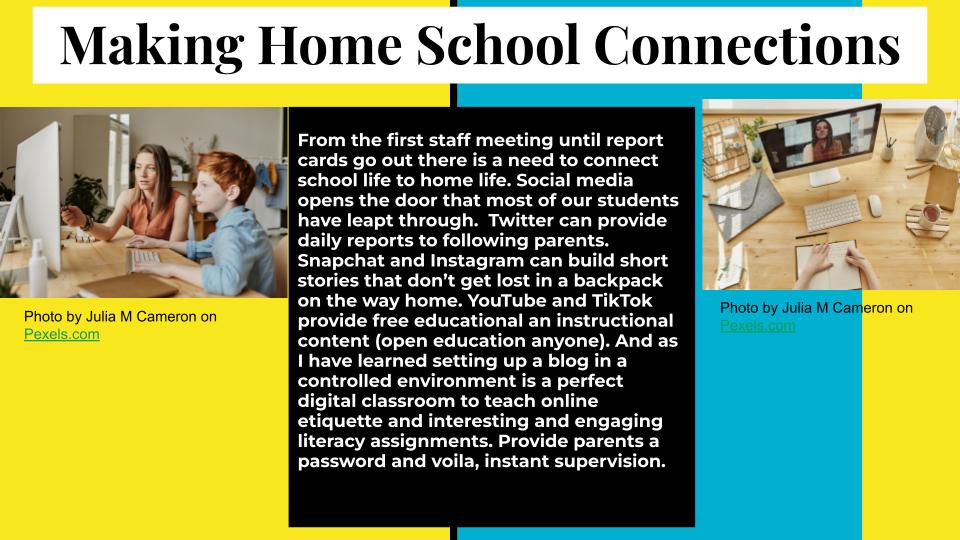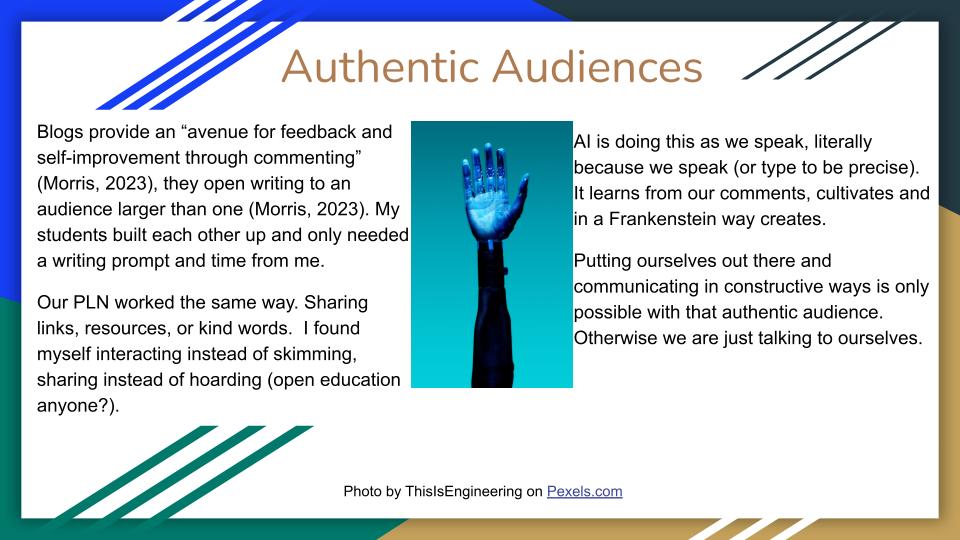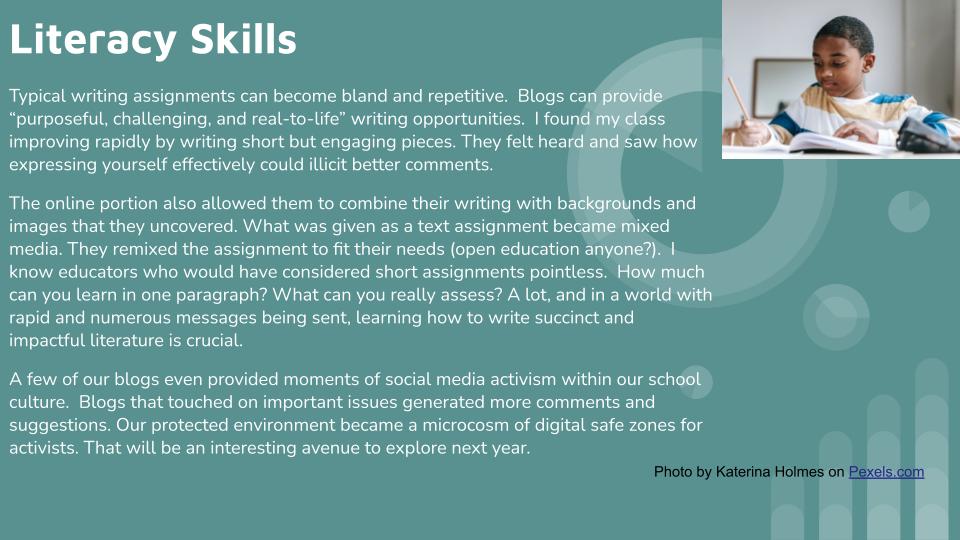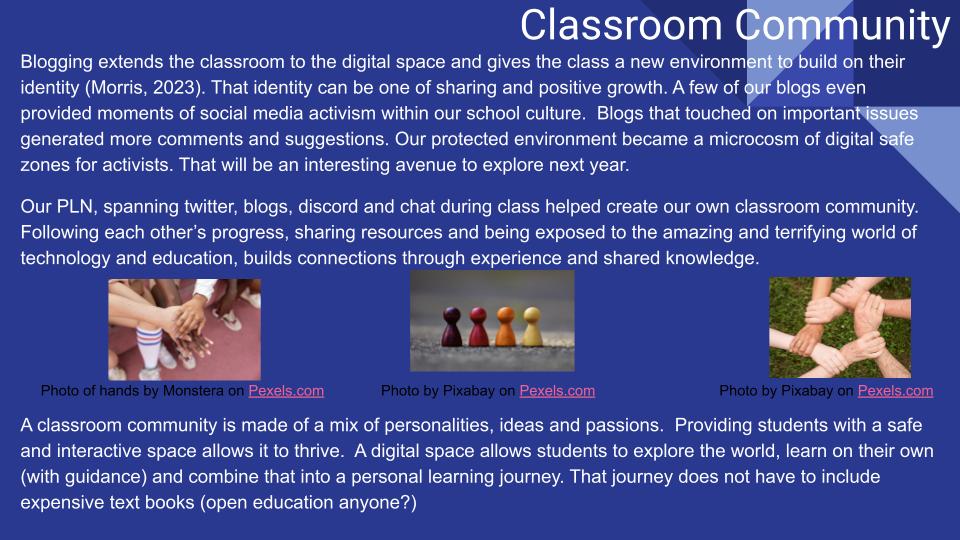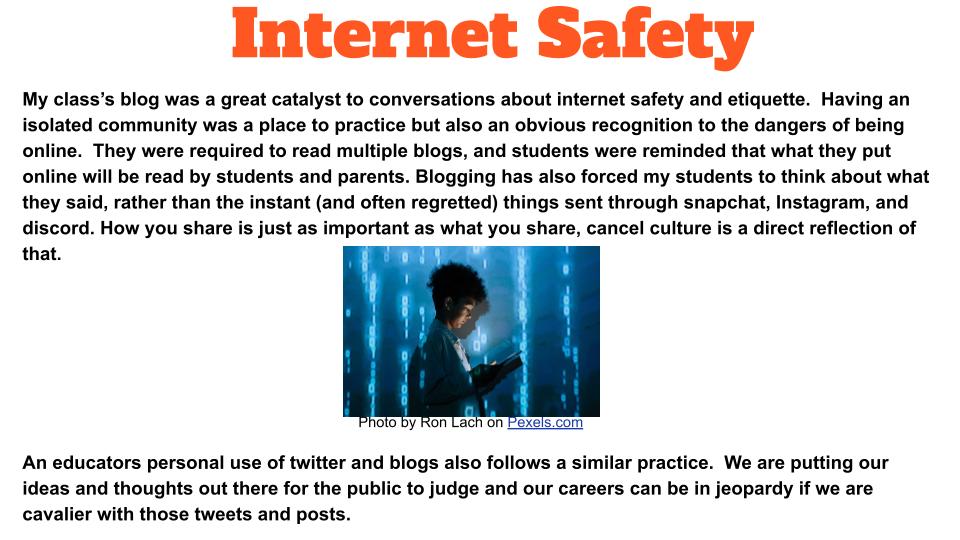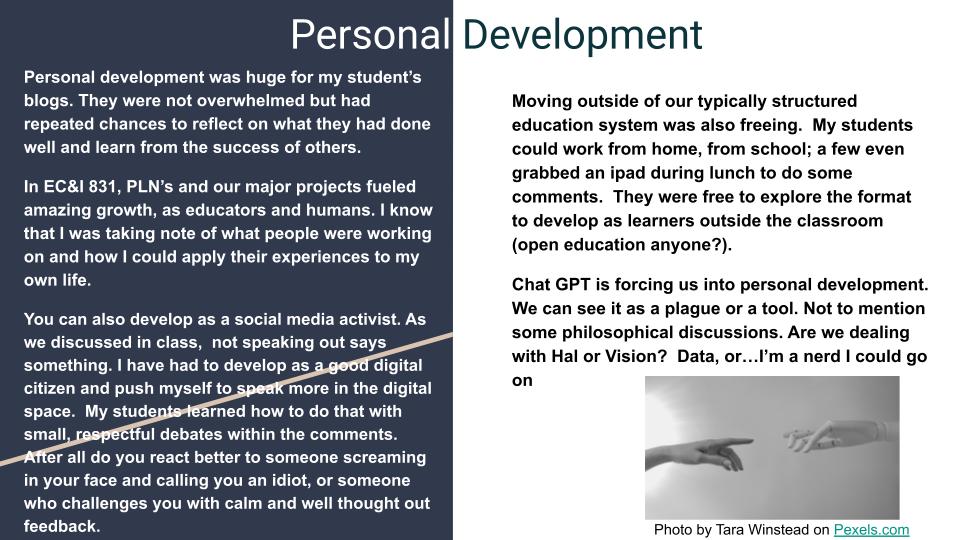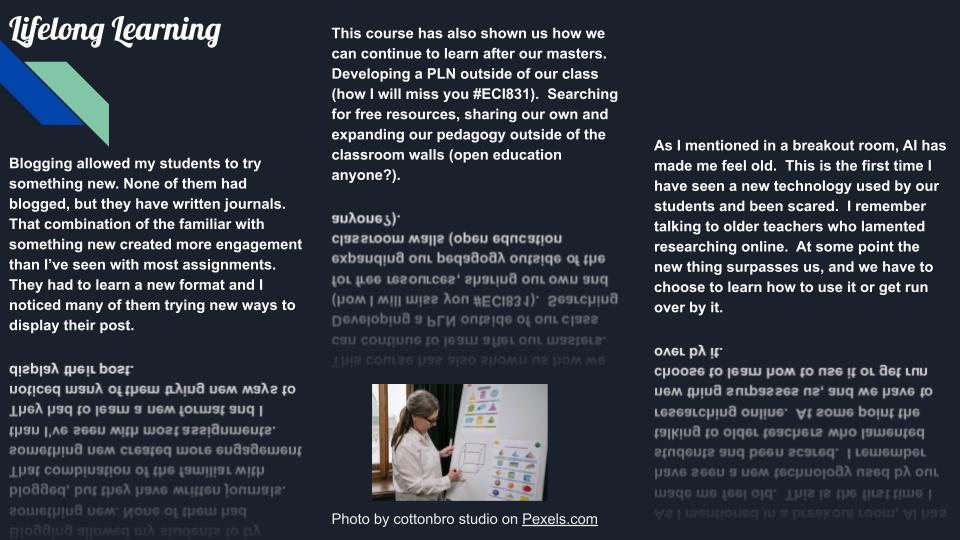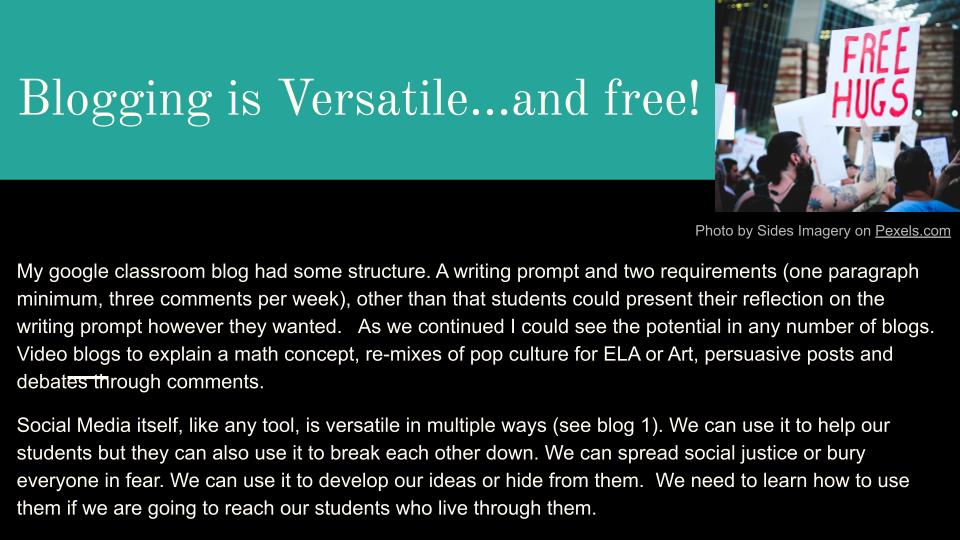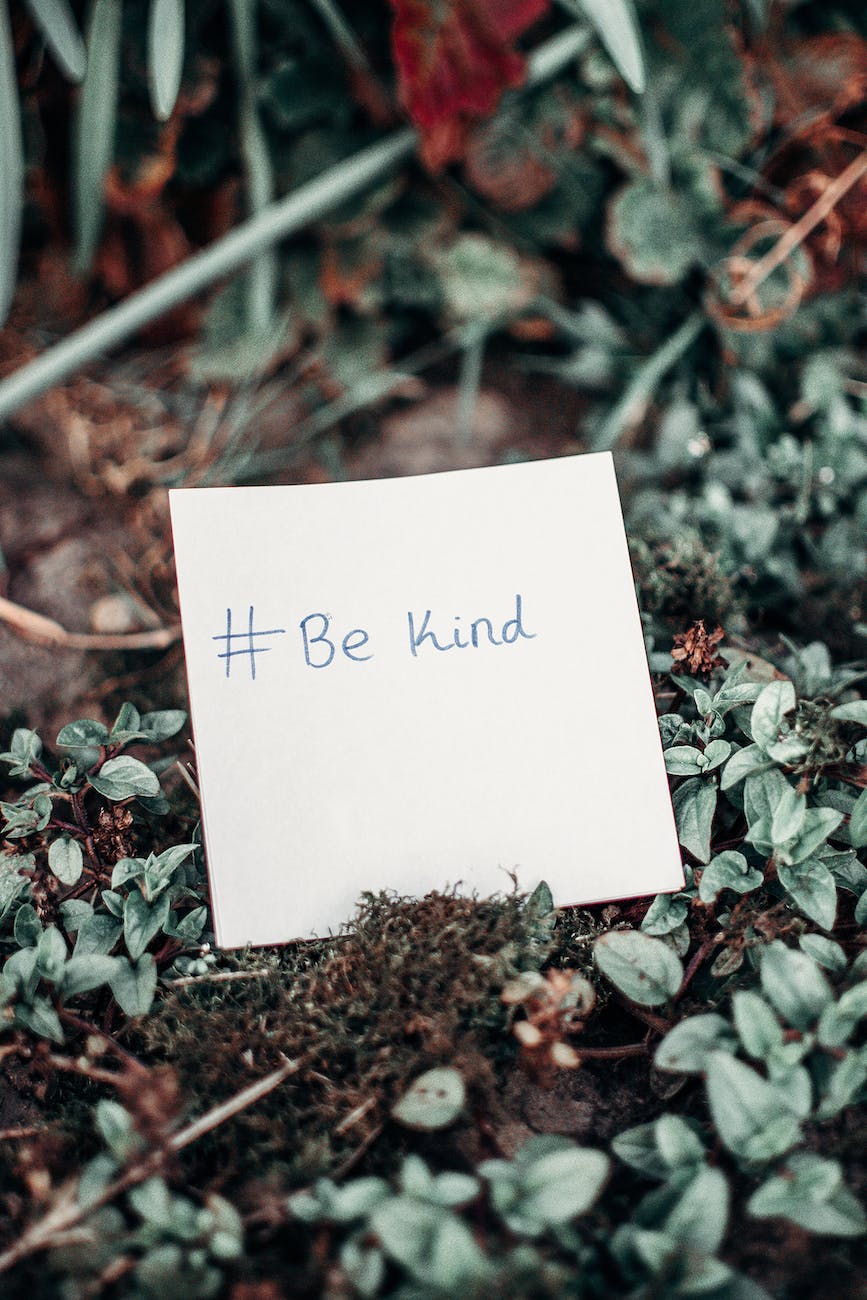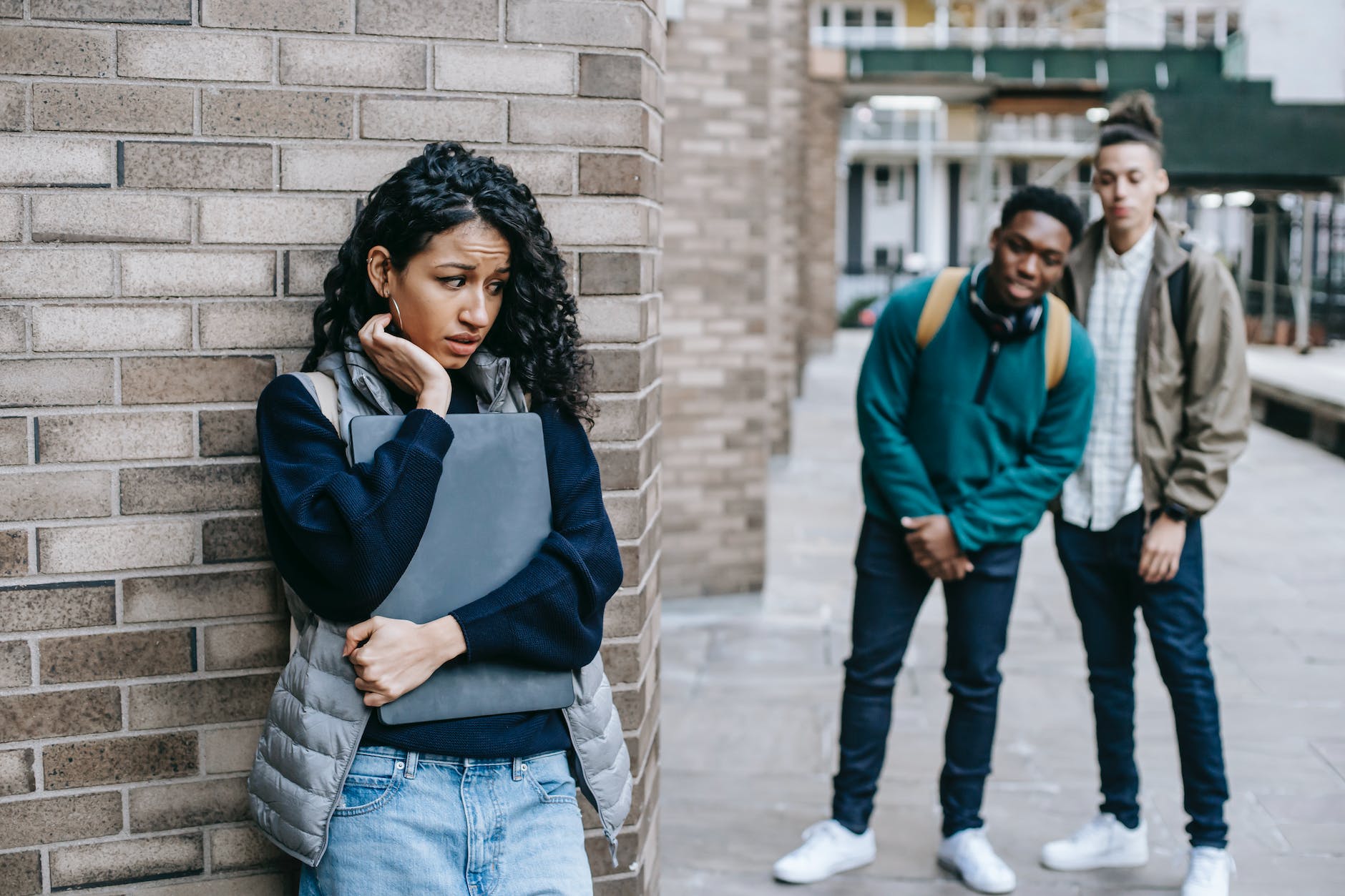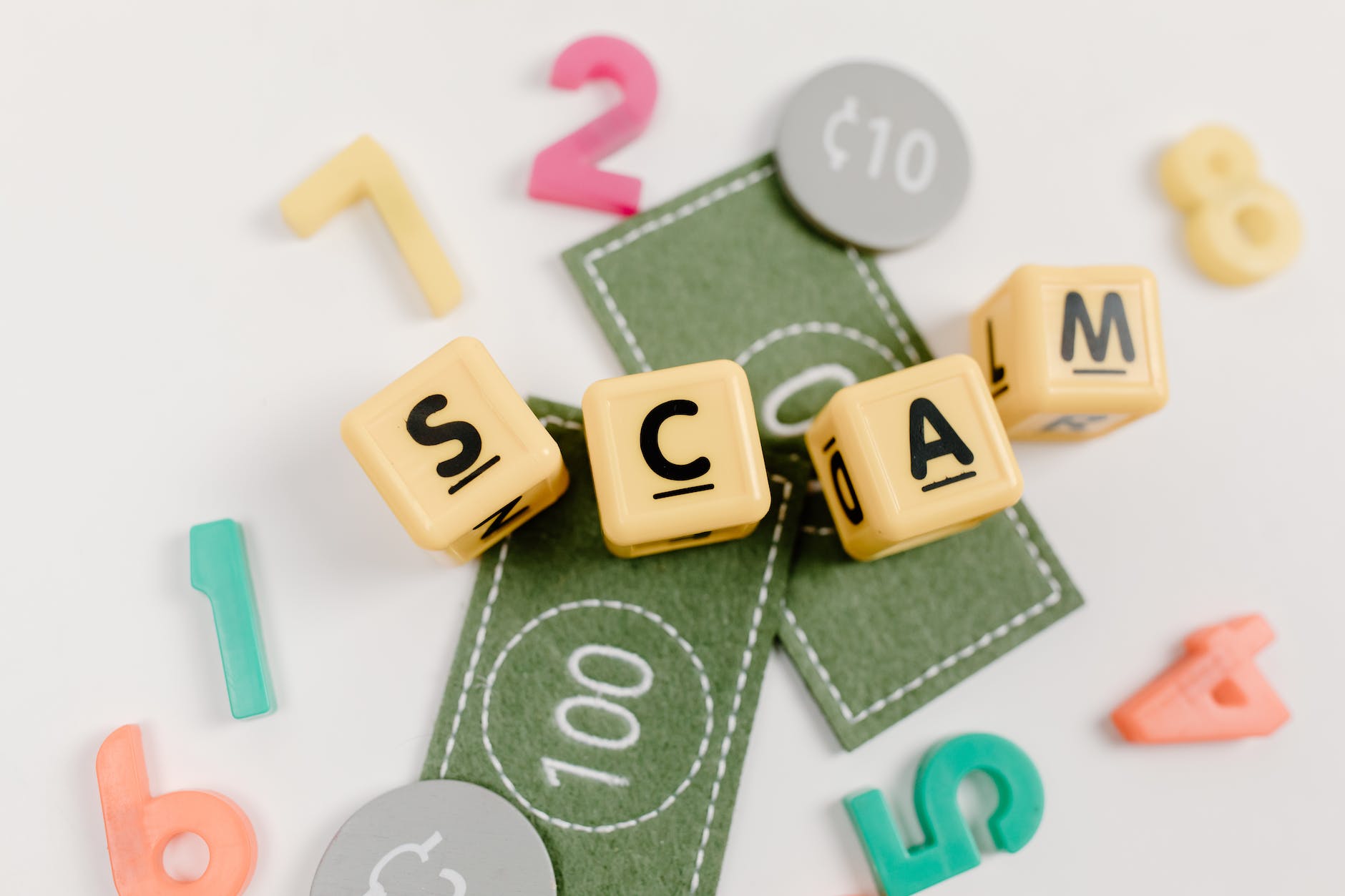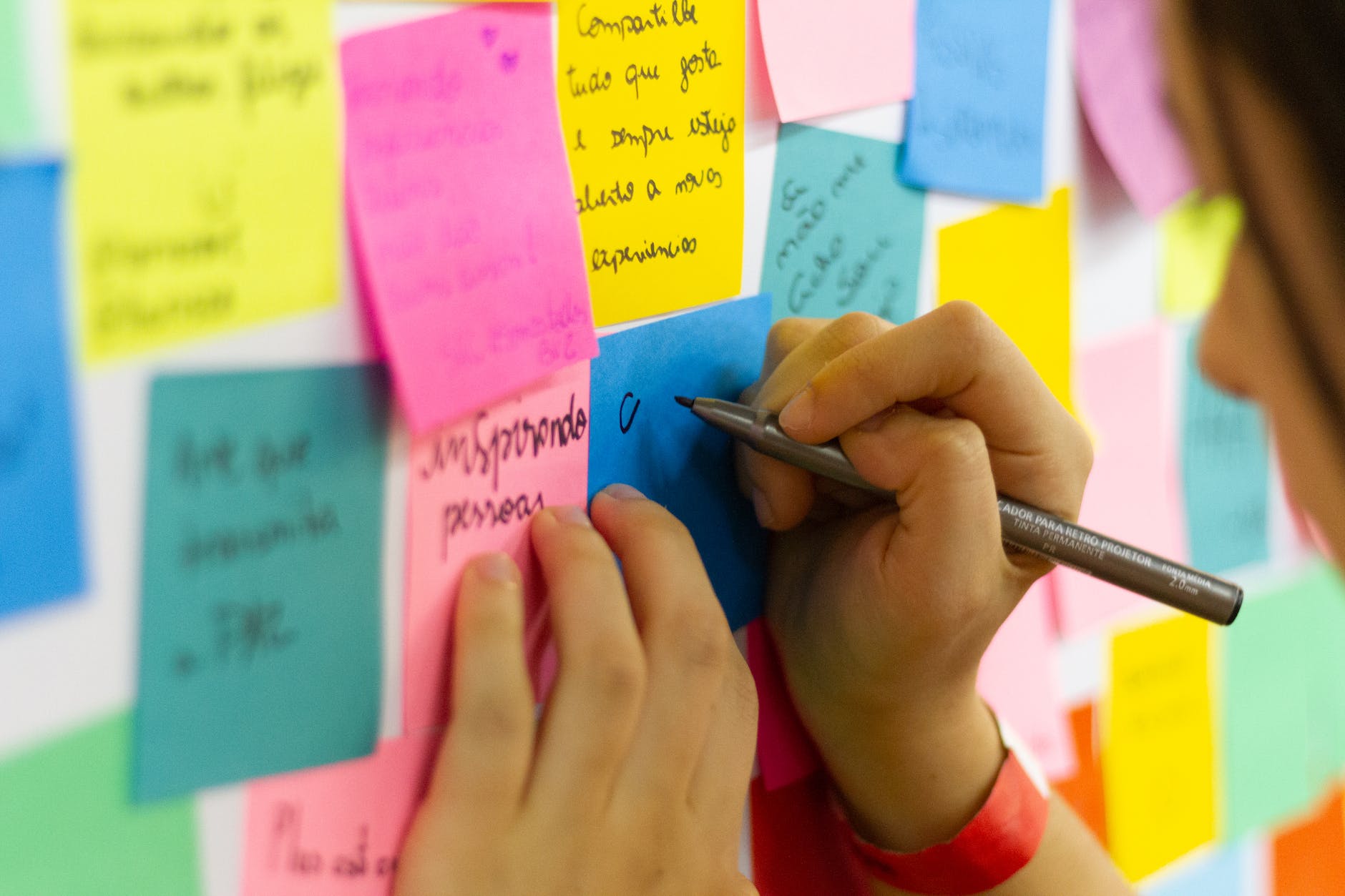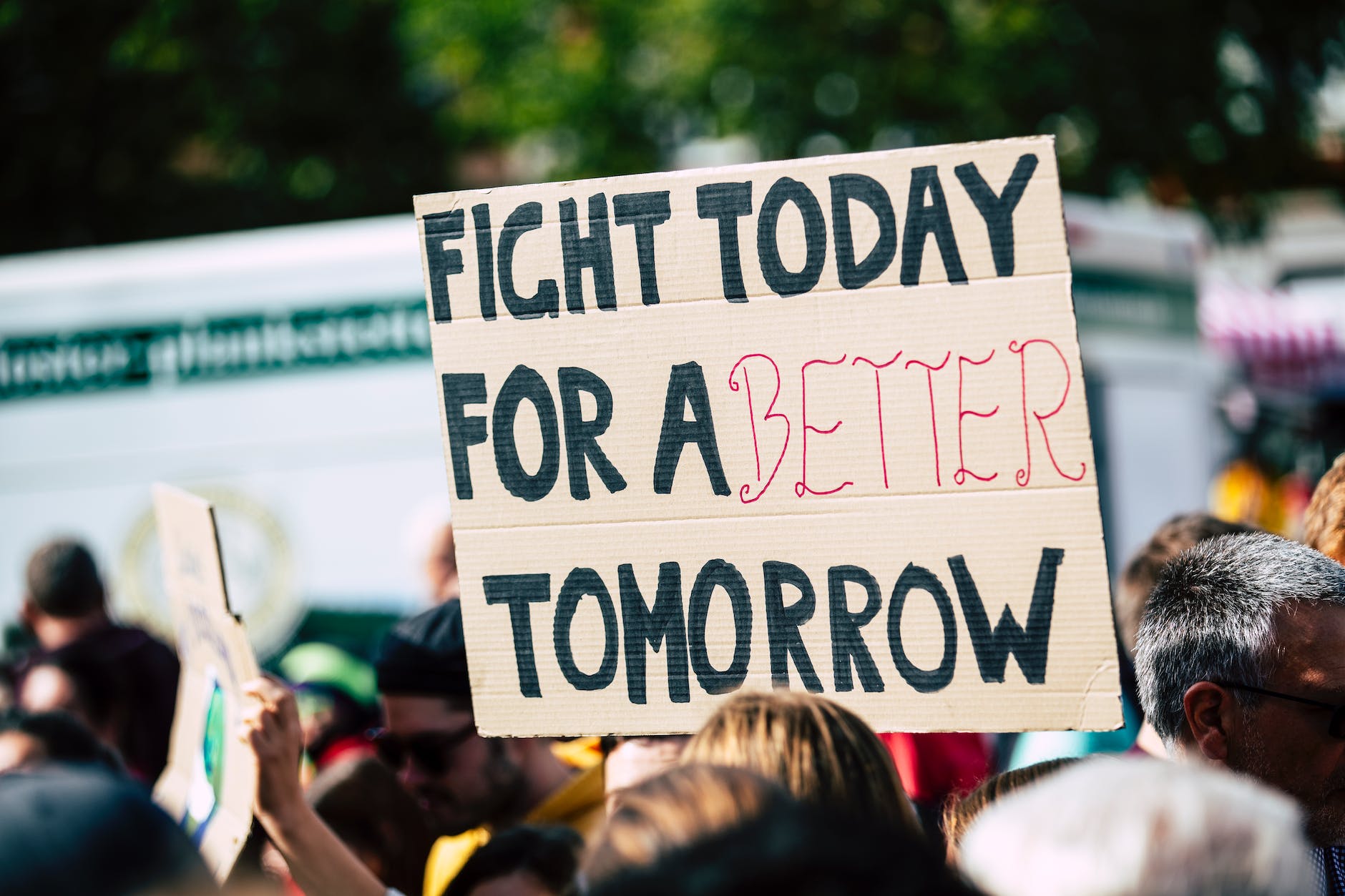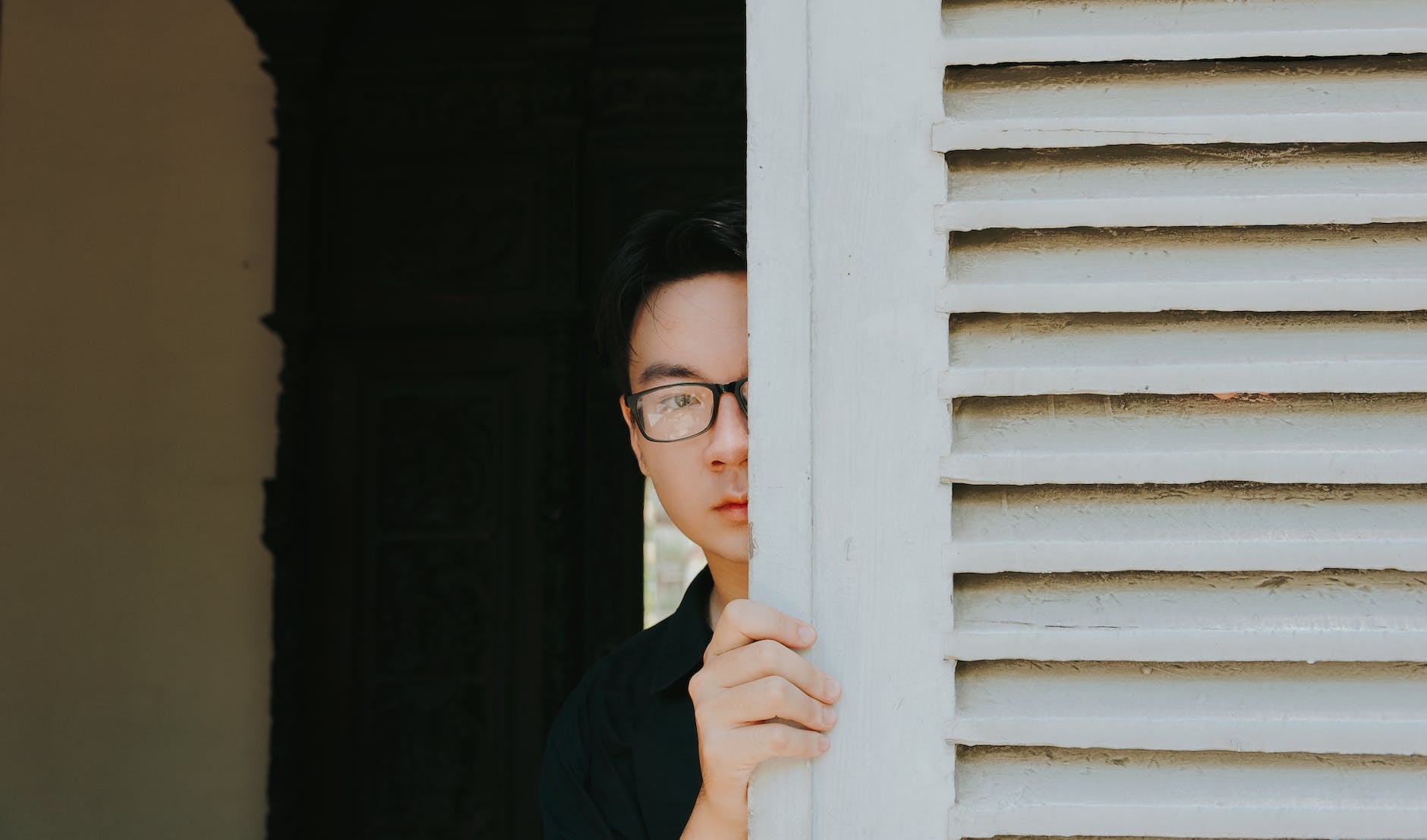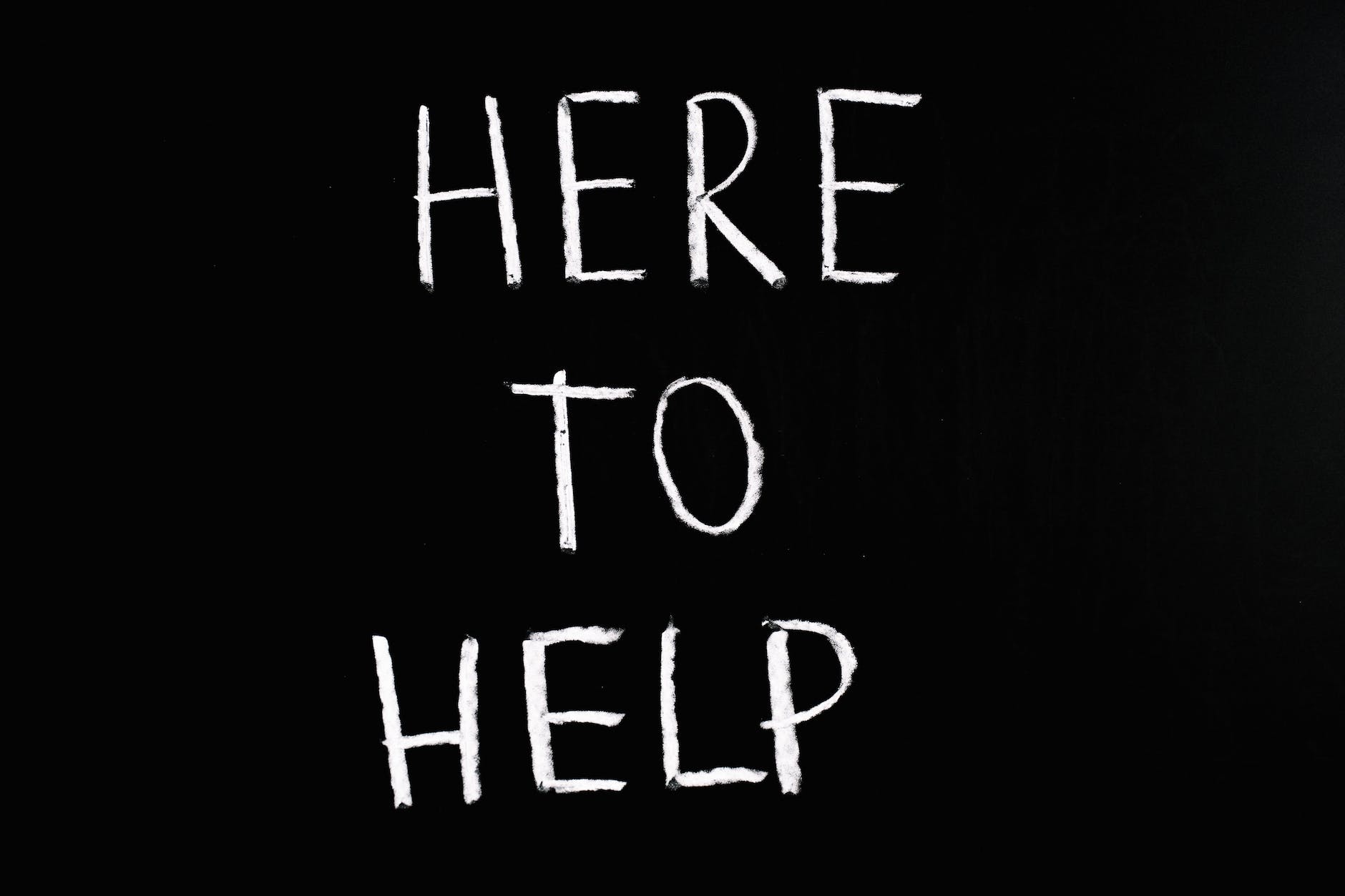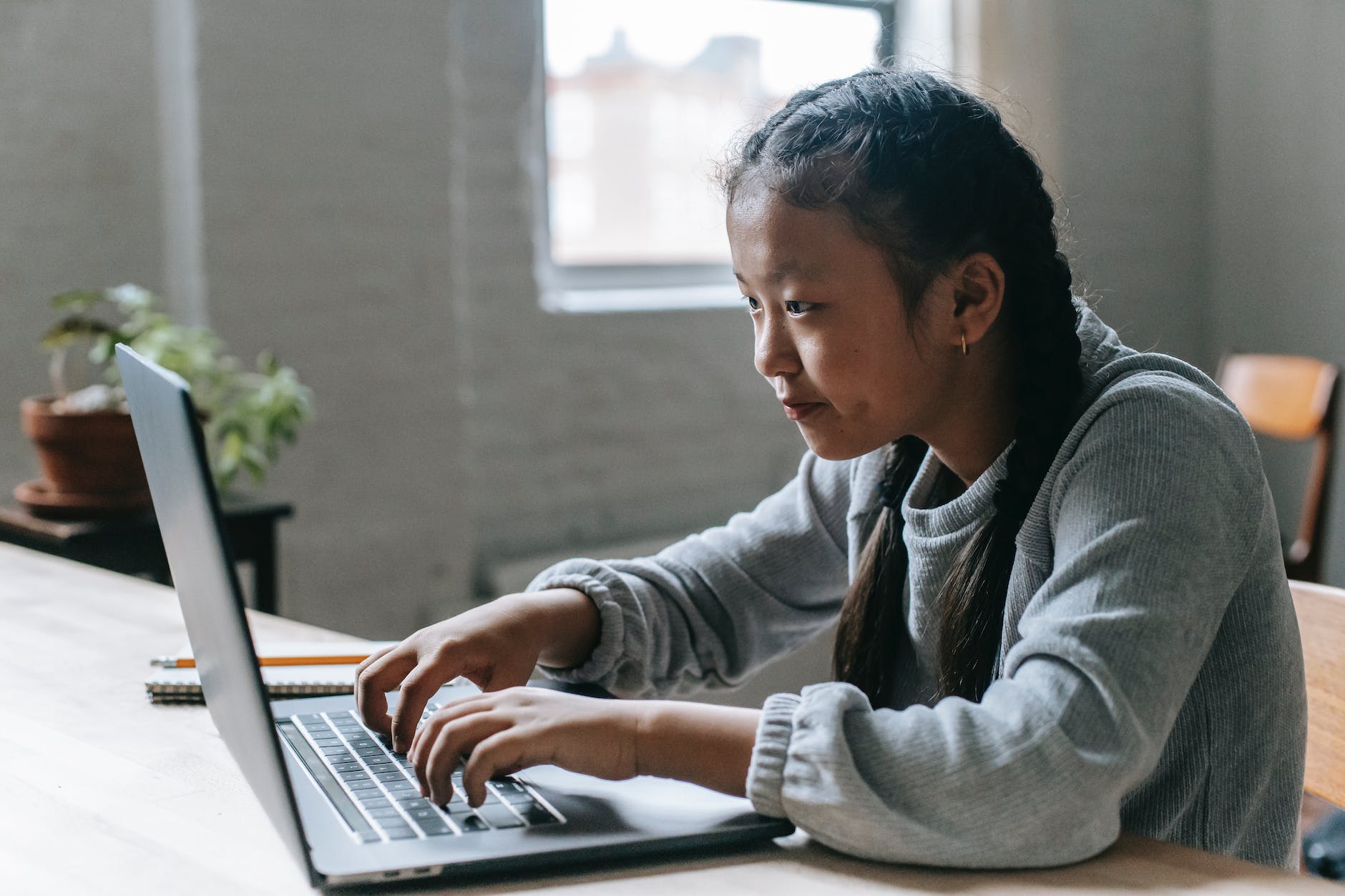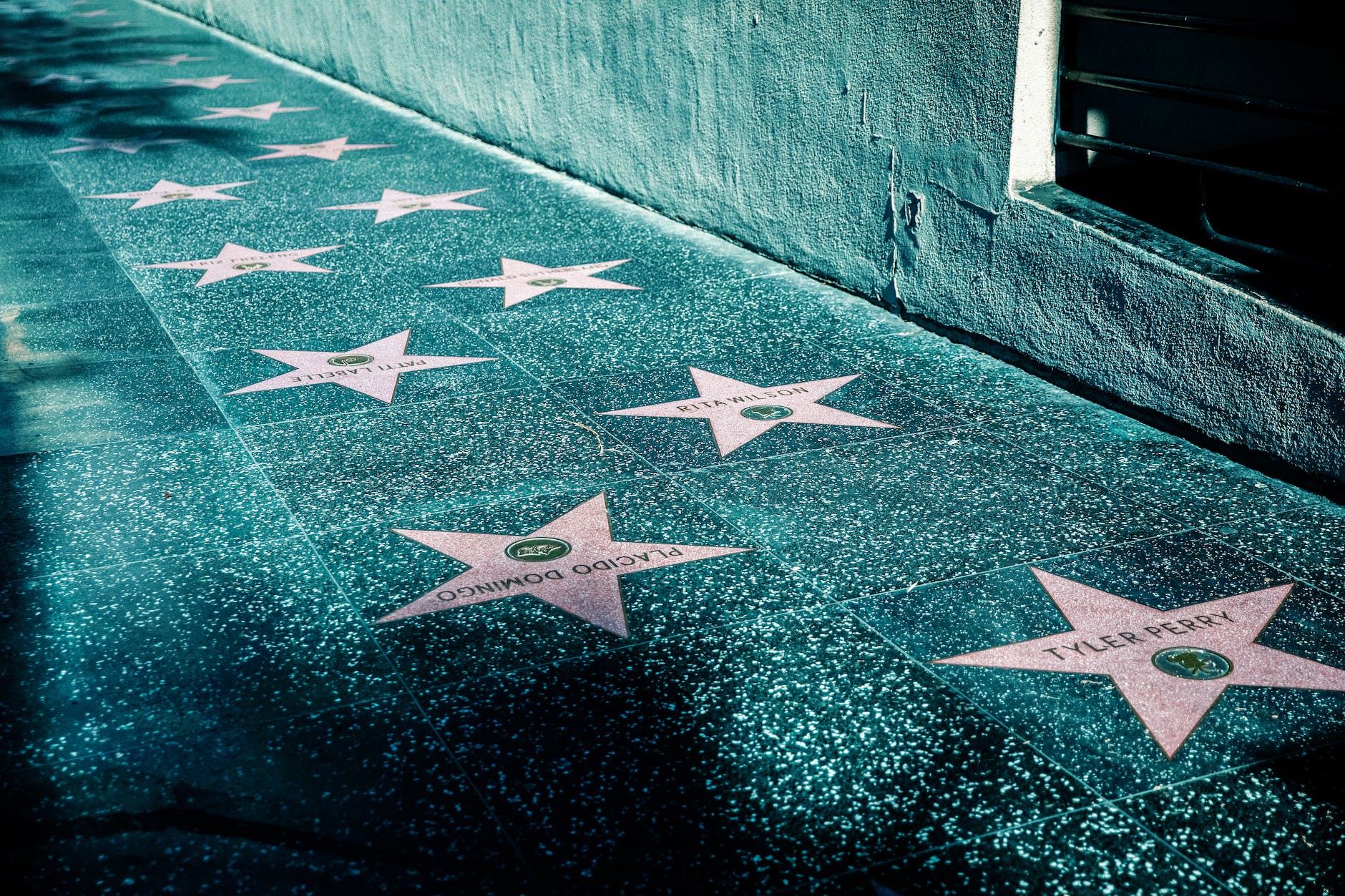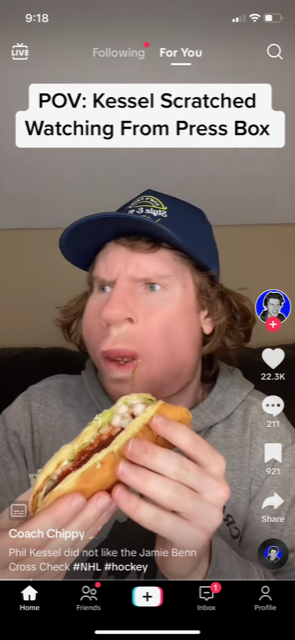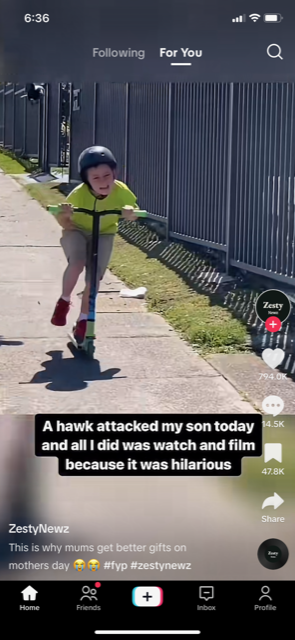This week was a continuation of their week 2 blogs as they were submitted and uploaded. Our topic was something that is often a hot button topic with my students, uniforms.
Positives
The overall writing improved, and they seemed to take my instruction well on how to improve their blogs (less formal, don’t make a list, add descriptive/engaging words, include pictures to break up the text).
Some comments were more detailed and made good reflections on what was written. A few even took my feedback and used that to recommend improvements on their peers writing.
There was an improvement with the visual aspect of the blogs and a few even played with the format.
Trending Trouble
While there was some improvement with comments, overall they were not as good this week.
Despite asking them not to write simple responses, there was quite a few “I agree with you,” comments. There was even a few students that wrote one strong response and then essentially copy and pasted it on other blogs.
There were far fewer comments this week. Perhaps because we had track and field, or I had a deadline for late assignments. Either way, it has dropped considerably.
Something I had not considered when using a prompt that could be applicable to other schools, researching answers. It was obvious when students were not just writing their own thoughts and a quick google search unearthed a few websites that listed the positives and negatives of uniforms. While not quite at a plagiarism level, a few were dangerously close.
Submissions were also slow this week. I had to extend the due date. Many gave the excuse of issues with technology, although these same students sent other assignments to my email. As a result I did not have time to get permission to show any blogs this week.
Next Steps
I have to remind students that comments are an important part of an online community. Reading alone does not create a dialogue; it also does not give the reader a sense of where they are within the spectrum of ideas and opinions in the group.
I also have to go over what is a “good” comment. While I did project some examples, it might be good to brainstorm comments as a class.
Some blogs were submitted to me in a physical form. While I will scan and upload them, I also should start to post them in the class. Hopefully this will remind students of the project and may encourage students to complete their work more quickly if they remember a physical copy is an option. In the past I have noticed how much they enjoy when others look at and discuss their posted artwork.
A quick discussion on using someone’s ideas to create your own will be needed. While it can be a jumping off point when you are stuck, it is important to speak to your own ideas and opinions. After all, the point of this blog is to share our experiences, not some strangers.
The initial excitement is quickly leaving as we rush towards the end of the year. I think celebrating the blogs in class will be a good way to remind them of the assignment and improve engagement. They may pretend to be shy, but when there is an opportunity to share their work, most want to present.
Blog #3 will be especially interesting, we will be talking about teachers.
